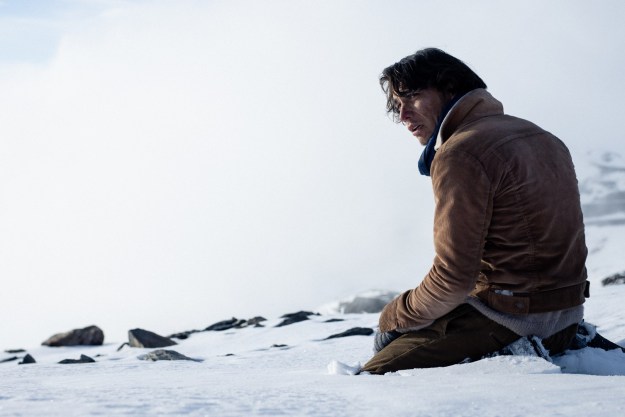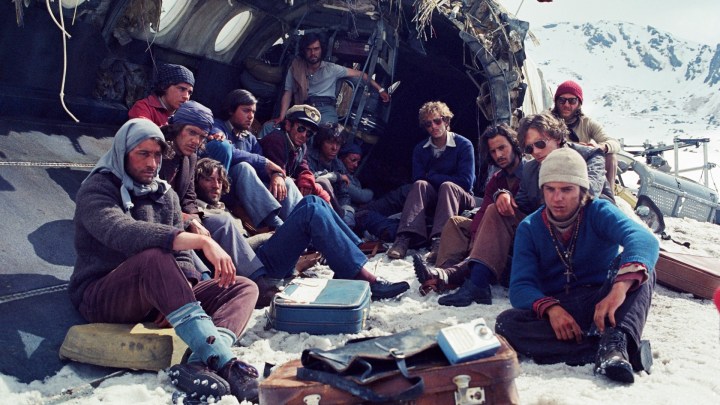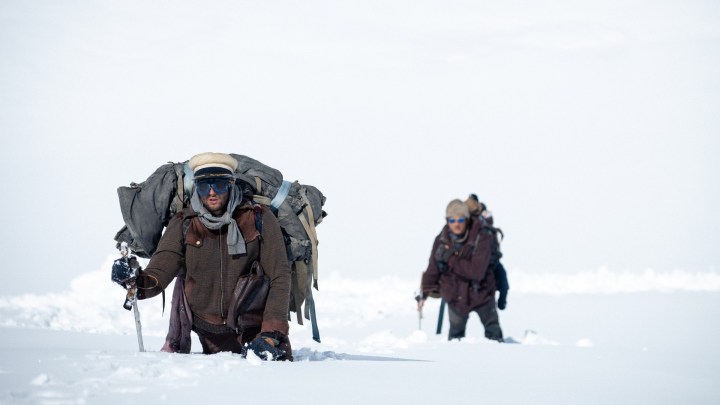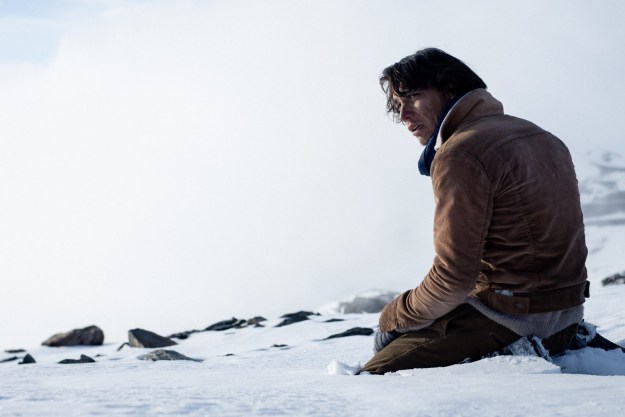
“Shouldn’t a true story of life, death, and cannibalism be a little more gripping?”
- A gripping true story
- An intense crash sequence
- It’s better than Alive
- Interchangeable characters
- Monotonous storytelling
- It’s not much better than Alive
In October 1972, a plane chartered by an amateur Uruguayan rugby team went down in the mountains south of Chile. Some of the passengers died in the crash, others in the weeks that followed — succumbing to their injuries or the cold or starvation. Those who lived to be improbably rescued did so because they made the unspeakable but necessary choice to consume the dead. Is what happened to them a tragedy or a miracle, asks the opening voice-over of Society of the Snow. The real question raised by this Netflix survival drama is: Shouldn’t a true story of life, death, and cannibalism be a little more gripping?
This is actually the second film to depict the so-called Andes flight disaster. Released in 1993, Alive reshaped a British bestseller about the incident into a Hollywood ode to the human spirit, with American actors delivering dialogue in English and a hokey sentimentalism at odds with the grim subject matter. (Ickier than scenes of the survivors munching on chunks of their friends and family was the general attempt to frame the events in inspirational terms.) Directed by J.A. Bayona and adapted from a different nonfiction book by Uruguayan journalist Pablo Vierci, Society of the Snow aims for a little more verisimilitude: The characters speak Spanish, the script reportedly sticks closer to the facts, and there’s less incongruous comic relief.

After a brief prologue heavy on cheap foreshadowing (“This may be the last trip we take together, you know?” one guy tells a soon-to-be-frozen-solid friend), Society of the Snow hits its high point, literally and figuratively, with an intense depiction of the crash. Even more potently precise than the anatomical and structural damage — the crunch of bones and metal — is the emotional arc of the sequence, as attempts to joke through early signs of turbulence give way to a wave of cresting panic and existential terror. It’s one of the more harrowing midair nightmares the movies have offered in a minute.
Society of the Snow tracks the ensuing ordeal by days and casualties, like investigators piecing together an aerial calamity from the black box recovered from the wreckage. “This is a place where life is impossible,” intones nominal protagonist and narrator Numa (Enzo Vogrincic Roldán) as he and the other survivors huddle close in the downed aircraft, plot periodic scouting missions, and readjust their expectations when it becomes clear that the search parties won’t see them from the air until the snow melts months later. With the exception of an eccentric choice involving the aforementioned narration, the film clings to a dreary realism as tightly as its characters cling to life. Eventually, the inevitable matter of what to eat arises, and the ensuing conversation credibly touches upon a range of objections, moral and even legal, before everyone accepts that going full Donner Party is the only way they’ll see the spring.

On that grisly subject, Society of the Snow is less graphic than Alive. This is not to say that Bayona, who made a name for himself with the supernatural thriller The Orphanage, doesn’t lean into the horror, fixing his camera an ominous distance away as one starving soul watches his teammates circle and carve. Later, the director revels in the claustrophobia of an avalanche that buries everyone in darkness. The primal terror of the elements clashes with the power of perseverance — a cocktail that recalls Bayona’s tacky disaster weepie The Impossible, which grossly asked us to feel uplifted by the endurance of British tourists while hundreds of thousands of others died in the tsunami that devastated Southeast Asia. Here, at least, survivor’s guilt hangs over the triumphant upshot, a “happy ending” rendered less so.
Still, this is a filmmaker with an affinity for anguish. He loves tear-streaked faces in close-up. So much of Society of the Snow is just that: a wilderness crucible retold through grimaces and stares, with particular attention to the concaving of features hollowed by malnourishment. Is there an integrity to how interchangeable the characters become, a blur of emaciated masculinity? Maybe someone so pushed to physical and psychological limits would shed personality as quickly as pounds, reduced only to appetite and need. But one does almost begin to miss the cheesier character beats of Alive, if only for how they differentiated the thin, thinning throng. All we get here is the contrast of wordless flashbacks to better times, each death triggering a quick in-memoriam clip of the deceased at the airport, oblivious to the arctic hell they’re about to enter.
Slathered in the dark polish that is quickly becoming a kind of Netflix international house style (see also: last year’s All Quiet on the Western Front), Society of the Snow looks arty and grave. But in broad strokes, we’re not so far from the Hollywood version. In fact, this new docudrama often plays like a gritty remake of Alive, simply coloring its sentimentalism in a trendier shade of gray. Arguably, the movie suffers from the same problem as its predecessor: After the big dietary decision is made, there’s no more conflict between these ciphers — and still not much drama in watching them shiver and wait for deliverance.
Society of the Snow is now playing in select theaters and is streaming on Netflix. For more of A.A. Dowd’s writing, visit his Authory page.
Editors’ Recommendations
Services Marketplace – Listings, Bookings & Reviews
